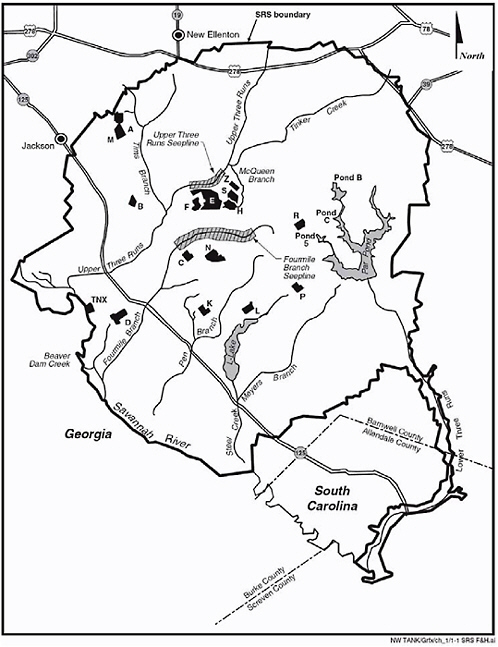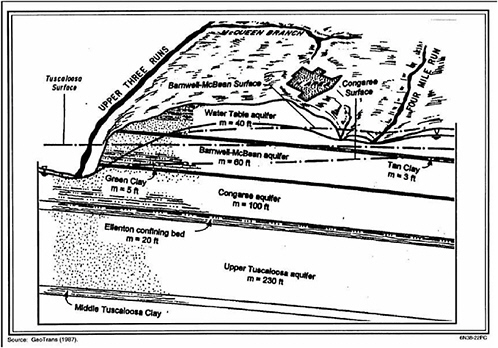Appendix E
Maps of the Savannah River Site

FIGURE E-1 Map of the Savannah River Site. The area labeled F is the location of the F Canyon and F Tank Farm. E-Area includes low-level waste disposal units. H-Area is the location of the H Canyon and H Tank Farm. S-Area is the Defense Waste Processing Facility. Z-Area is the location of the Saltstone Production Facility and Saltstone Vault SOURCE: DOE (2002).

FIGURE E-3 Hydrologic units in the General Separations Area. SOURCE: DOE (1997).
References
Cook, J.R. 2002. Comprehensive Environmental Management System Approach: The Right Tool For Stewardship. WSRC-MS-2002-00651. Aiken, S.C.: Westinghouse Savannah River Site Company.
U.S. Department of Energy (DOE). 1997. Industrial Waste Water Closure Module for the High-Level Waste Tank 17 System. Revision 2. August 26. Construction Permit Number: 17,424-IW. Aiken, S.C.: Department of Energy Savannah River Operations Office.
DOE. 2002. High-Level Waste Tank Closure, Final Environmental Impact Statement. DOE/EIS-0303. May. Aiken, S.C.: Department of Energy Savannah River Operations Office.




